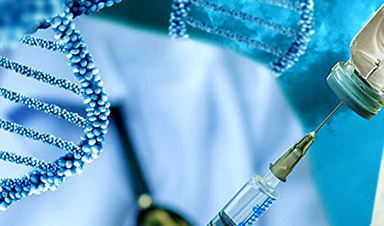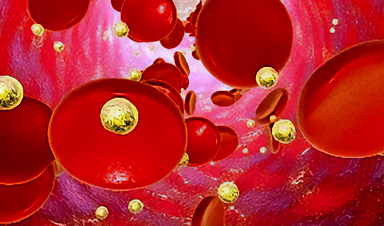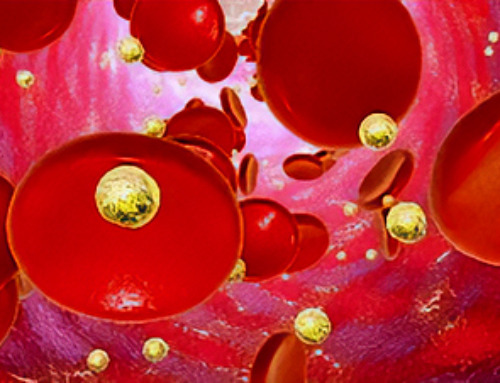In 2017, I sat down to read a book entitled, A Crack in Creation: Gene Editing and the Unthinkable Power to Control Evolution. Written by Jennifer Doudna it described a new tool called CRISPR that could edit DNA. Doudna first published a description of this gene editing tool in the journal Science in 2012. I wrote about CRISPR in 2017 and then again following the progress being made using it and the evolution of its tool capabilities as researchers in laboratories around the world discovered novel ways to use it.
In 2019, CRISPR started moving out of university research laboratories and into the world of medical clinical trials. In one case it was used to edit the DNA of T-cells by removing a gene and replacing it with one to attack sarcomas and multiple myelomas. A similar editing experiment replaced a gene in people suffering from beta-thalassemia, a genetic blood disorder. And in another trial, CRISPR-modified bone marrow stem cells were used to eliminate sickle cell anemia.
Among the Massachusetts Institute of Technology’s 10 technology breakthroughs in 2023, CRISPR made the list. Why? Because MIT sees CRISPR’s days in clinical trials around rare diseases coming to an end. The CRISPR of today, eleven years after it first came on the scene, is no longer just a slice-and-dice tool.
CRISPR Going Mainstream
CRISPR is being used by a company, Verve Therapeutics, today, to alter genetic code associated with high cholesterol that is treated using drugs called statins.
I take statins once a day because my cholesterol levels are slightly higher than normal. I remember when it was first prescribed, the doctor said the city should be putting statins in the drinking water just like fluoride because high cholesterol was a huge problem here in North America.
Cholesterol comes in two forms, one good, the other bad. Our bodies need good cholesterol because it is essential to cells. But too much of the bad kind can clog arteries and lead to strokes and heart attacks.
According to the U.S. Centers for Disease Control (CDC), more than half of American adults are on prescribed statins to reduce cholesterol levels. That number isn’t too far different in Canada. But there are problems with being on statins forever. Blood levels have to be checked periodically to ensure the doses are right and cholesterol levels are within the normal range. Statins also have side effects. For instance, when I first started on a statin I had horrific backaches. A pharmacist recommended I take a supplement, CoQ10, with the statin and the problem has never reoccurred.
Genetic Vaccines in Our Future
What Verve is offering instead of a statin, is the first genetic vaccine on the market, a one-time fix to permanently lower bad cholesterol levels. To understand how a genetic vaccine works here is a quick refresher on DNA. It is a complex molecule containing four nucleotides, also called nucleobases. They go by the names adenine, guanine, cytosine and thymine. These are the biological building blocks for life on Earth.
What Verve has done is use CRISPR to edit a single nucleobase within our DNA for PCSK9, a gene expressed in the liver. PCSK9 encodes a protein that regulates the amount of cholesterol in blood plasma. Delivered as a vaccine Verve has shown the treatment lowers blood cholesterol levels by as much as 70% and keeps it down permanently. Limited human testing has shown excellent results. Larger clinical trials are coming up.
From Verve’s curing high cholesterol to the use of CRISPR for genetic vaccines to cure other diseases is not too far in the future. A CRISPR-derived genetic vaccine could lead to a cure for diabetes, high blood pressure, and even Alzheimer’s.
CRISPR for the masses can be revolutionary. It has enormous ramifications for humanity with genetic vaccinations replacing many prescription drugs. And a genetic vaccination will only need to be administered once providing a permanent fix.
Those who see this as us playing God will likely react negatively to this medical breakthrough. I suspect the anti-vaxxers will be out with pitchforks in hand ready to march. And on the Internet conspiracy theorists will spread fear and misinformation about CRISPR and the evil intent of a medical cabal out to take over the world and turn us into zombies. For those who fit into these categories, the option of the prescription pills we have today will still remain.
News
Nanocrystals Carrying Radioisotopes Offer New Hope for Cancer Treatment
The Science Scientists have developed tiny nanocrystal particles made up of isotopes of the elements lanthanum, vanadium, and oxygen for use in treating cancer. These crystals are smaller than many microbes and can carry isotopes of [...]
New Once-a-Week Shot Promises Life-Changing Relief for Parkinson’s Patients
A once-a-week shot from Australian scientists could spare people with Parkinson’s the grind of taking pills several times a day. The tiny, biodegradable gel sits under the skin and releases steady doses of two [...]
Weekly injectable drug offers hope for Parkinson’s patients
A new weekly injectable drug could transform the lives of more than eight million people living with Parkinson's disease, potentially replacing the need for multiple daily tablets. Scientists from the University of South Australia [...]
Most Plastic in the Ocean Is Invisible—And Deadly
Nanoplastics—particles smaller than a human hair—can pass through cell walls and enter the food web. New research suggest 27 million metric tons of nanoplastics are spread across just the top layer of the North [...]
Repurposed drugs could calm the immune system’s response to nanomedicine
An international study led by researchers at the University of Colorado Anschutz Medical Campus has identified a promising strategy to enhance the safety of nanomedicines, advanced therapies often used in cancer and vaccine treatments, [...]
Nano-Enhanced Hydrogel Strategies for Cartilage Repair
A recent article in Engineering describes the development of a protein-based nanocomposite hydrogel designed to deliver two therapeutic agents—dexamethasone (Dex) and kartogenin (KGN)—to support cartilage repair. The hydrogel is engineered to modulate immune responses and promote [...]
New Cancer Drug Blocks Tumors Without Debilitating Side Effects
A new drug targets RAS-PI3Kα pathways without harmful side effects. It was developed using high-performance computing and AI. A new cancer drug candidate, developed through a collaboration between Lawrence Livermore National Laboratory (LLNL), BridgeBio Oncology [...]
Scientists Are Pretty Close to Replicating the First Thing That Ever Lived
For 400 million years, a leading hypothesis claims, Earth was an “RNA World,” meaning that life must’ve first replicated from RNA before the arrival of proteins and DNA. Unfortunately, scientists have failed to find [...]
Why ‘Peniaphobia’ Is Exploding Among Young People (And Why We Should Be Concerned)
An insidious illness is taking hold among a growing proportion of young people. Little known to the general public, peniaphobia—the fear of becoming poor—is gaining ground among teens and young adults. Discover the causes [...]
Team finds flawed data in recent study relevant to coronavirus antiviral development
The COVID pandemic illustrated how urgently we need antiviral medications capable of treating coronavirus infections. To aid this effort, researchers quickly homed in on part of SARS-CoV-2's molecular structure known as the NiRAN domain—an [...]
Drug-Coated Neural Implants Reduce Immune Rejection
Summary: A new study shows that coating neural prosthetic implants with the anti-inflammatory drug dexamethasone helps reduce the body’s immune response and scar tissue formation. This strategy enhances the long-term performance and stability of electrodes [...]
Scientists discover cancer-fighting bacteria that ‘soak up’ forever chemicals in the body
A family of healthy bacteria may help 'soak up' toxic forever chemicals in the body, warding off their cancerous effects. Forever chemicals, also known as PFAS (per- and polyfluoroalkyl substances), are toxic chemicals that [...]
Johns Hopkins Researchers Uncover a New Way To Kill Cancer Cells
A new study reveals that blocking ribosomal RNA production rewires cancer cell behavior and could help treat genetically unstable tumors. Researchers at the Johns Hopkins Kimmel Cancer Center and the Department of Radiation Oncology and Molecular [...]
AI matches doctors in mapping lung tumors for radiation therapy
In radiation therapy, precision can save lives. Oncologists must carefully map the size and location of a tumor before delivering high-dose radiation to destroy cancer cells while sparing healthy tissue. But this process, called [...]
Scientists Finally “See” Key Protein That Controls Inflammation
Researchers used advanced microscopy to uncover important protein structures. For the first time, two important protein structures in the human body are being visualized, thanks in part to cutting-edge technology at the University of [...]
AI tool detects 9 types of dementia from a single brain scan
Mayo Clinic researchers have developed a new artificial intelligence (AI) tool that helps clinicians identify brain activity patterns linked to nine types of dementia, including Alzheimer's disease, using a single, widely available scan—a transformative [...]





















